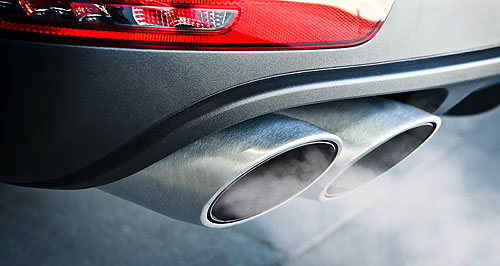News - General News - EmissionsAussie consumer trends slowing CO2 reductionAchtung: German manufacturers could be in hot water after allegations of collusion on diesel emissions technologies. New cars getting cleaner but not a focus for Australian consumers, says report5 Jun 2017 THE National Transport Commission (NTC) Australia has released a report on vehicle emissions reductions showing that Australian consumer preferences are slowing the rate of emissions reductions to the equal-smallest margin since recording began in 2002. In 2016, average emissions intensity on new Australian cars was rated at 182 grams of CO2 per km – an improvement of 1.1 per cent over 2015 and a 28 per cent improvement since 2002. However the average drop last year was the equal smallest on record, due to Australian buyers’ love for SUVs and pick-ups, of which more than 32,000 and 15,000 were sold in 2016 respectively. These include 2016’s best-selling vehicle, the Toyota HiLux, Ford’s Ranger pick-up which also featured in the top five and the Mitsubishi Triton which finished ninth in the best-selling vehicles list last year. All three models feature large-capacity engines and diesel technology, which tends to emit greater levels of CO2 than petrol-powered units. The NTC estimated that if all new vehicle buyers purchased the vehicle with best-in-class emissions levels, the national CO2 intensity level would be reduced to 75g/km, representing a 59 per cent reduction. In 2016, there were 51 models on sale that could be considered a ‘green’ car, which represented 2.5 per cent of total sales, down from 4.7 per cent in 2015. A ‘green’ car is defined as one that emits no more than 120g/km of CO2. The data in the report, which was sourced from the Federal Chamber of Automotive Industries (FCAI), suggested that around 90 per cent of vehicles sold in Australia come from the same 15 manufacturers, and out of those 15, German car-maker Audi’s models had the lowest average level of CO2 emissions with 144g/km, while Holden topped the list with 222g/km. Despite the local manufacturer being the least environmentally friendly of the most popular brands, Australian-built vehicles are improving their emission levels to an average of 213g/km, a 2.3 per cent increase over 2015. Private buyers were the most environmentally responsible purchasers with an overall average of 176g/km, followed by business buyers at 187g/km and lastly government fleets at 201g/km. Australian CO2 emissions pale in comparison to new vehicle fleets in Europe, where the average emissions for new passenger vehicles was 120g/km – 46 per cent lower than Australia and enough for the average European vehicle to be considered ‘green’. The NTC outlined a number of reasons for the discrepancy, which included Australia’s preference for bigger, heavier, diesel-powered vehicles, fewer government incentives and relatively better fuel prices. Commenting on the report, the FCAI said that a lack of government incentives to purchase low-emission vehicles was holding Australia back from reaching the emissions levels of regions such as Europe. Another issue identified was the poor fuel quality in Australia, which is ranked 66th in the world and last out of the 35 member countries of the Organisation for Economic Co-operation and Development (OECD). FCAI chief executive Tony Weber said the organisation was in talks with the government on improving fuel quality to allow manufacturers to offer high-tech next-generation engines to Australian consumers. “There’s no doubt about the importance of the decisions which need to be made this year around getting Australia’s transport standard fuel quality up to match that of the European standards,” he said. “Australia has the lowest quality petrol of the 35 countries in the OECD, below Mexico, Turkey and Estonia.”“Our sales data shows quite clearly that in general, Australian consumers prefer very different types of vehicles to European consumers and this preference flows through to our CO2 emissions.”  Read more |
Click to shareGeneral News articlesResearch General News Motor industry news |

















Facebook Twitter Instagram